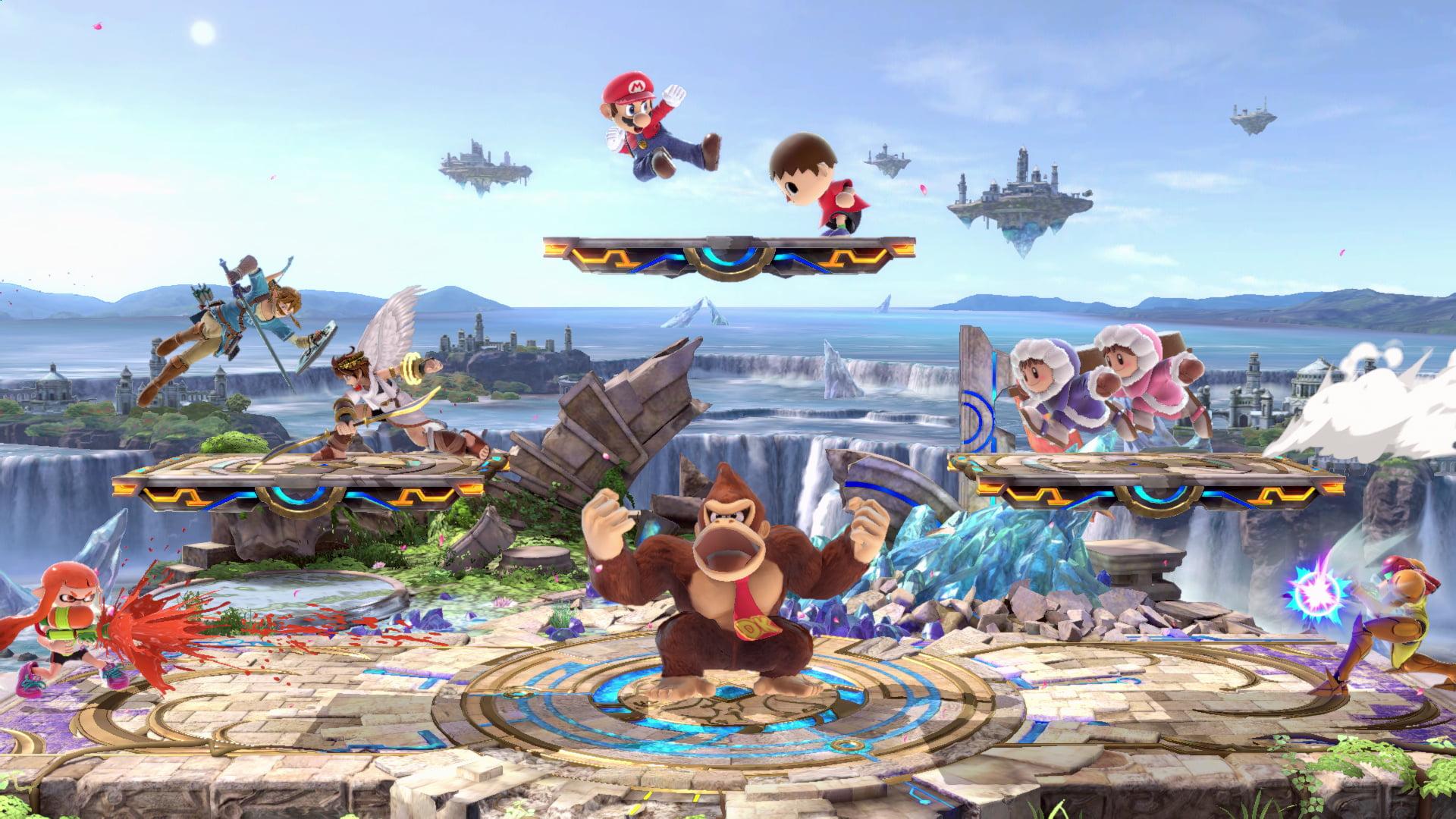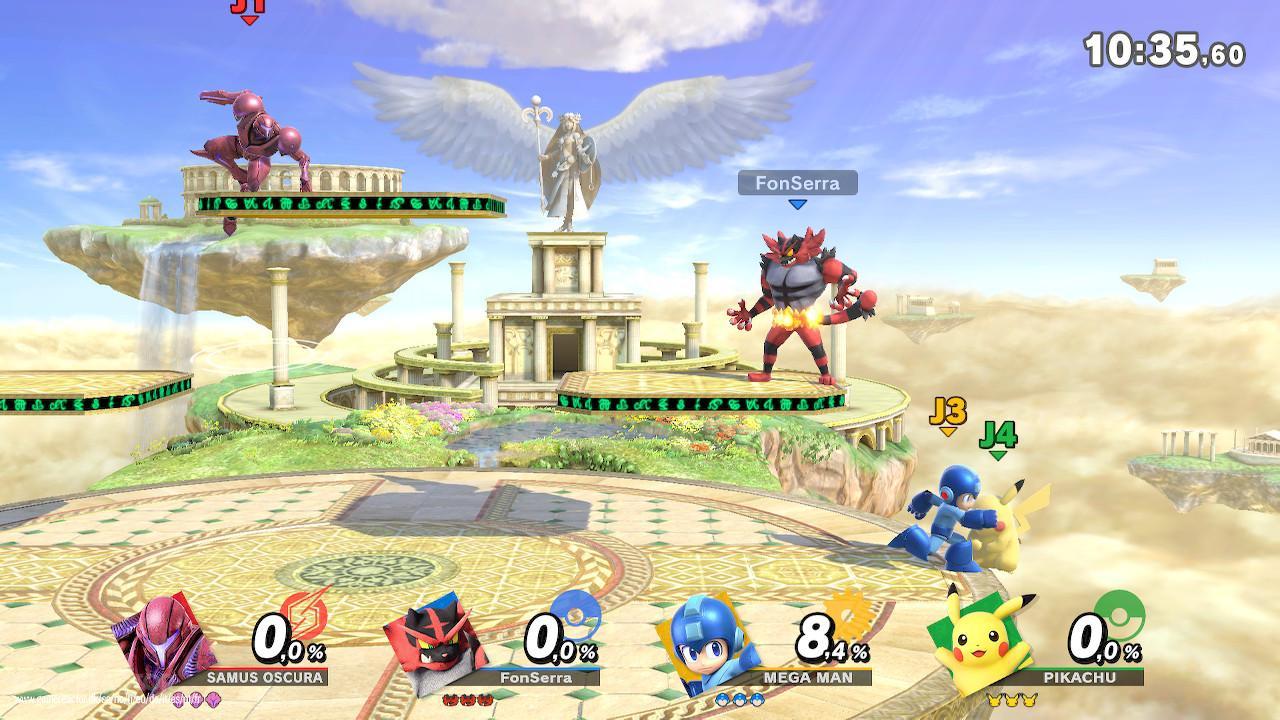Super Smash Bros Ultimate by Nintendo’s Masahiro Sakurai
Mechanics:
- Competition
- Win states
- Challenges
- Character Selection
- Actions:
- Fighting
- Block
- Special Attack
- Walk
- Pivot
- Taunt
- Jump
- Die
Dynamics: Time Pressure (have to kill the most opponents before time or lives runs out), Stock, Call and Response (attack/counter-attack), Agency, and Freedom of Choice.
Aesthetic Components: Fantasy, Challenge, Competition

Super Smash Bros. is an AWESOME 3d multiplayer fighting game that features characters and environments from a range of different Nintendo franchises; it is truly any Nintendo fan’s dream! Though it was this unique crossover element that first got me and my sisters into the game, it was the sense of adventure, competition, and collaboration that the game provided which made us stay. The incorporation of win states and challenges for both single and multiplayer modes gives players incentive and motivation to continue playing so their chosen character can end up victorious. In-game, players are able to select their fighter (each with their own unique set of fighting mechanics and abilities) and engage in combat with CPUs or other local players. A typical match of fighting consists of blocking, moving, taunting, hitting, combo and special attacks, and dying by the hand of an opponent. Though it depends on your game settings/mode, the overarching objective is to have the best killstreak by being the best fighter. A good understanding of the mechanics is greatly needed in order to consistently play well and outwit opponents; as with all fighting games, the more people practice, the more accustomed they get to game controls/moves and the better they get. However, the mechanics are also easy enough/self-explanatory that younger or less experienced players (like my younger sister) still have a shot at racking up kills simply by spamming buttons. Among my family and friends, everyone is always practicing and getting better and this communal sense of progress/competition pressures players to keep improving so they don’t lag behind.

The implementation of time pressure, stock lives, agency, and freedom of choice as game dynamics all contribute to an overall positive and fun game experience. Such game elements also contribute to the player’s motivation to keep playing and master mechanics because of the feelings of satisfaction they provide when playing. The game and world design are also extremely aesthetically pleasing, the music is dramatic and inspiring, and the fighting animations are smooth. When playing, you feel as if you have been transported into a new world where you are your fighter, holding the same intense motivation: to fight and to win. When you master combos or perfectly time your special attack, you feel nothing short of a fighting pro comparable to master Swordsman Ike or a hungry Kirby. The game almost emotionally attaches you to your player as it makes it your duty to help them succeed by growing a better understanding of its mechanics. Whenever I lose (which isn’t often against my family), I feel like I have failed my fighter and have an obligation to improve. The game’s mechanics allow you to truly immerse yourself in a virtual world as your favorite Nintendo characters, have fun with your family/friends, and engage in stimulating competition. Super Smash Bros. is a leading game of its genre and its mechanics should be a model for new games to come.



